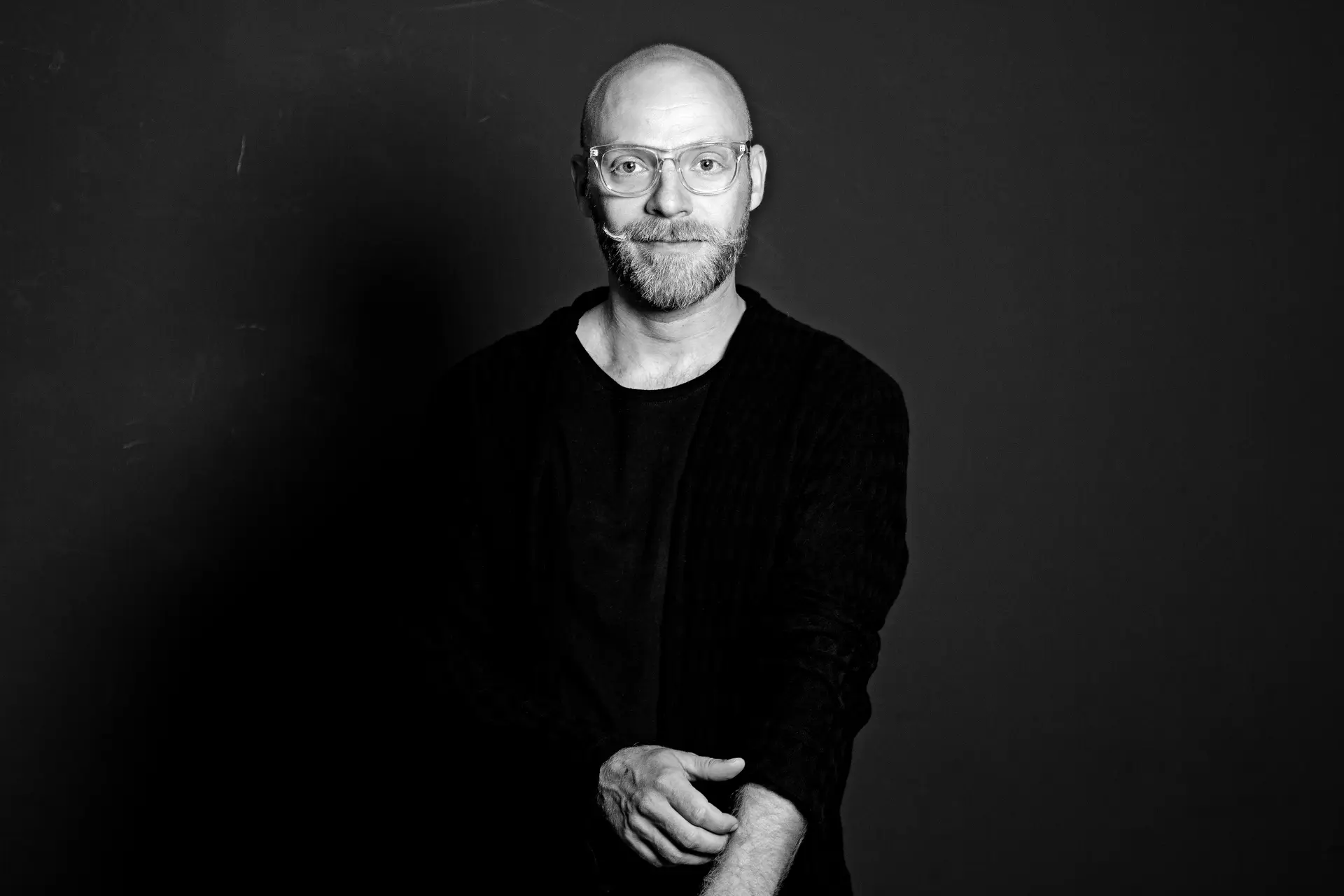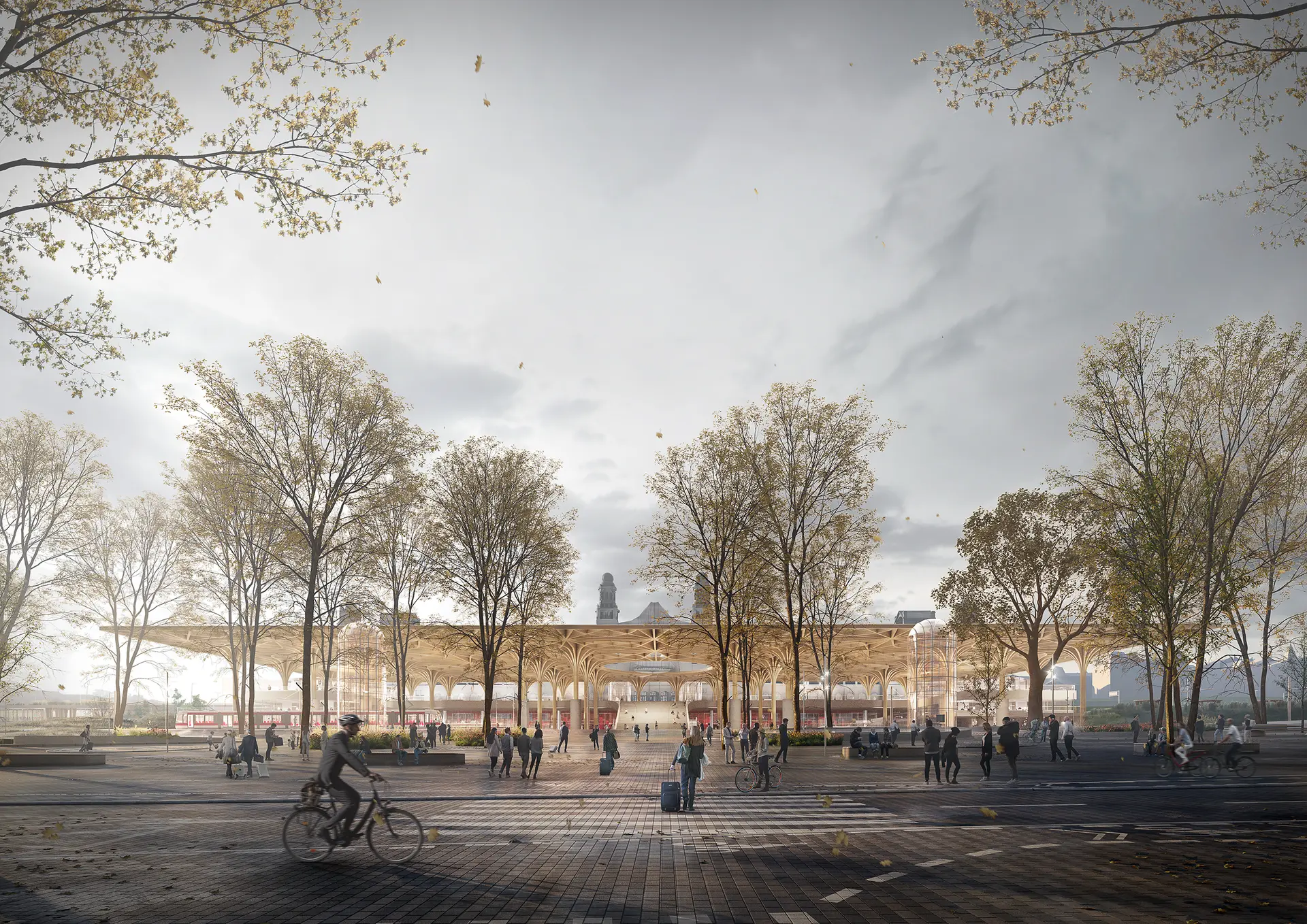
Prévessin-Moëns, France
2022 - 2027
CERN Building 777
Located within CERN’s Prevessin campus, at the edge of a dense forest on the French side of the France-Switzerland border, the new Building 777 (B777) will combine office, laboratory and workshop space in an open timber structure that prioritizes community, collaboration, and well-being amongst occupants in a low-carbon design.
Project details
Client
CERN
Status
The design of B777 echoes CERN’s mission to unite scientists in the collective pursuit of knowledge. Founded in 1952, 12 European countries came together to establish the largest research facility for particle physics. Today, CERN remains at the epicenter of scientific innovation, home to the world’s largest and most complex research instruments, notably the powerful particle accelerator The Large Hadron Collider.
A departure from the traditional industrial, laboratory context, B777 is designed to be immersed in nature, complementing the existing structures on CERN’s Prevessin campus while creating an appealing destination. The project's architectural vision goes beyond industrial aesthetics or conventional labs, aiming to create a welcoming and comfortable atmosphere for staff and collaborators.


"Our vision is to craft a dynamic workspace at the heart of nature—a place where well-being, collaboration, and knowledge thrive. It's not just an ordinary office; the circular design serves as a symbolic marker, creating a cultural hub and amenity center for the entire campus.”
Søren Øllgaard
Design Director Europe
Community, collaboration, and well-being
This innovative space is imagined as a home away from home for employees. Built of timber, CERN’s 777 Building will include 13,000 m² of office space, labs, workshops, a quadruple height public atrium and courtyard. Designed to foster collaboration and cross-pollination, the atrium will offer a warm welcome upon arrival, envisioned as a connecting space that links all floors, as well as the restaurant, labs, and courtyard on the ground floor. Featuring informal working and lounge areas and connecting bridges, the atrium design aims to promote organic interactions and knowledge sharing.
"Our vision is to craft a dynamic workspace at the heart of nature—a place where well-being, collaboration, and knowledge thrive. It's not just an ordinary office; the circular design serves as a symbolic marker, creating a cultural hub and amenity center for the entire campus,” says Søren Øllgaard, Partner and Design Director, Henning Larsen.


The nature campus
Drawing inspiration from the protected plazas at the heart of nearby Alpine villages, the central courtyard of the building will offer an optimized micro-climate tailored to local conditions. Extending outdoor thermal comfort, this space is intentionally designed to remain open and permeable through the year, creating a connection to nature while also serving as an extension of the office and indoor activities. Acting as a social hub, it will seamlessly connect lab zones to informal meeting areas surrounded by greenery.
Fostering biodiversity by merging the surrounding landscape, the design creates seamless connections around the campus in the form of ‘slow’ paths and an extended biodiversity corridor. The landscape surrounding the building will take on a more urban character featuring islands of wild grass inspired by the Jura mountains and space for bike paths, bike parking, and charging stations.

“The biobased design of the structure seamlessly blends into its surroundings, mirroring the natural elements and encouraging further exploration with the rough soils and native vegetation beneath your feet. As the native biodiversity thrives and evolves with the seasons, so does the building and its inhabitants. This serene environment sets the stage for a unique working experience, where the possibility of activity in nature enhances productivity and well-being.”
A strategic focus on carbon reductions
The three-dimensional rounded façade maximizes daylight and natural views whilst also creating self-shade to prevent solar radiation, resulting in lower energy consumption from cooling.
Reducing embodied and operational carbon is prioritized throughout the design, evaluating the effect the building will have on the environment through life-cycle assessments. To accommodate the possibility of reusing and recycling the structural materials, the structure is designed for disassembly by using simple, demountable and mechanical connections.

Contact
All contacts
Mikkel Eskildsen
Design Director

Søren Øllgaard
Design Director Europe

Head of Department, Landscape
Next project
Nový Hlavák - Prague Central Station
Explore project